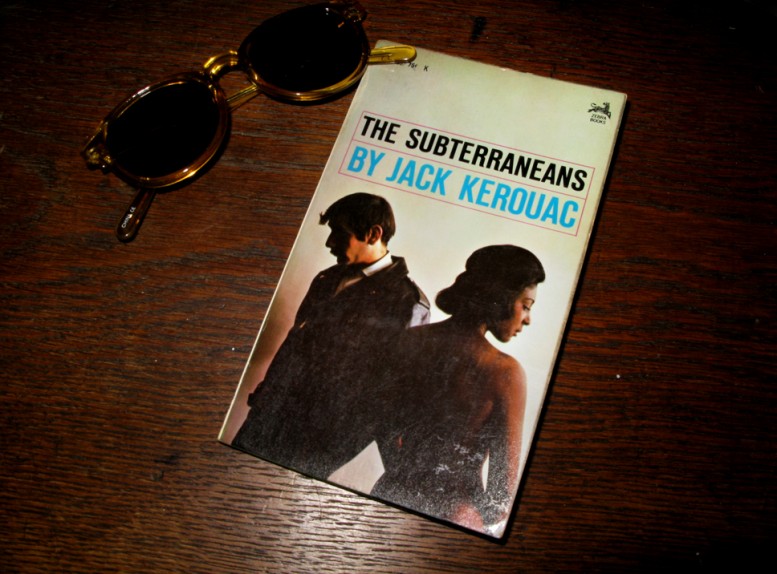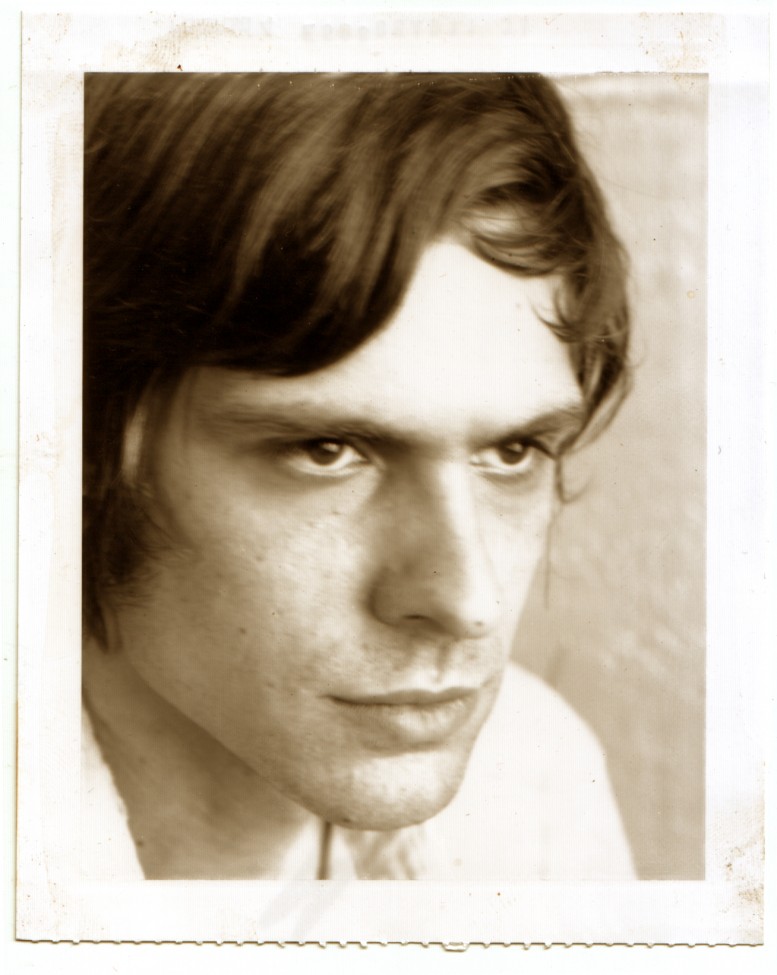 Ed Ruscha photographed by Dennis Hopper
Ed Ruscha photographed by Dennis Hopper
Benjamin Péret's Leg of Lamb
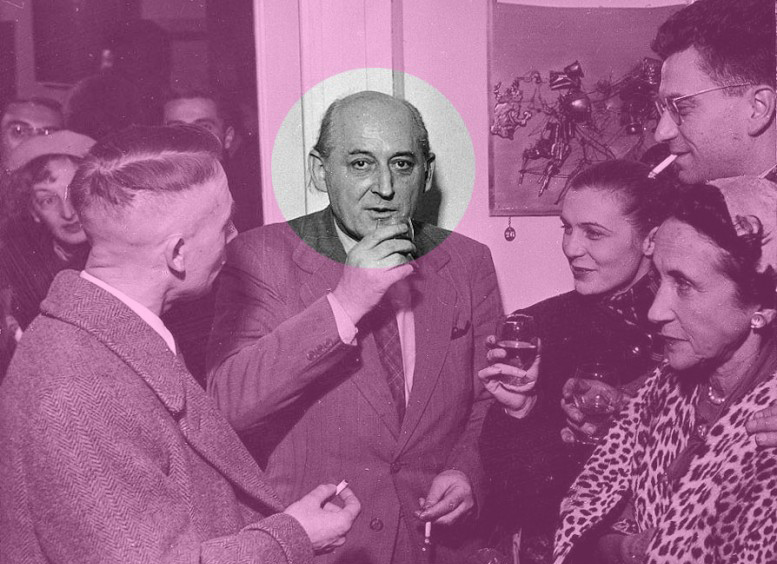
Benjamin Péret was a founding member of surrealism, a card carrying surrealist - if there ever was such a thing - and he was Salvador Dali's favorite poet; as well as a revolutionary and a rabble rouser who stirred the pot of literary movements as well as political ones. Péret, like his writing, led an almost automatic life. Entering world war one in order to avoid persecution for defacing a statue and whilst in a fox hole one day he discovers the writings of Dadaist Guillaume Apollinaire - a Dadaist poet who coined the word surrealism. After the war Péret found his way in to the heart of the burgeoning surrealist movement and subsequently into the heart of its founder Andre Breton. The surrealists found it best to stay close in the early years of its founding in order to protect their brilliant, insane, and sometimes infantile visions of the world - a vision that if proclaimed by a solitary person would most likely lead to confinement for insanity in a world that saw if perfectly fine without all the sliced eyeballs and flying tigers.
“...a smorgasbord of automatic writing.”
But Benjamin Péret was one of the only surrealists, beside Andre Breton, who stayed a surrealist even after the mirage wore off. Péret's Leg of Lamb: Its Life and Works, which is available now on Wakefield Press, is a "foundational classic of Surrealist literature." Almost entirely written in the 1920s, Leg of Lamb is a collection of brilliant, absurdist visions - twenty-four narratives in short prose - a "smorgasbord of automatic writing." Visit the the Wakfield Press website and pick up a copy for your collection - its a must for your library. www.wakefieldpress.com
Henry Miller's Last Residence on Earth
 Pacific Palisades, California, photography by Oliver Maxwell Kupper
Pacific Palisades, California, photography by Oliver Maxwell Kupper
"The frantic desire to Live, to live at any cost, is not a result of the life rhythm in us, but of the death rhythm." Henry Miller
Walter Benjamin: A Reflection in Pictures

Architecture and art have played a particular part for Walter Benjamin, because the relation of the past to the present was not of a temporal but of a figurative nature for him. Thus, according to his conception, the past could converge with the present via a flashlike image to form a ‘constellation’ and produce a ‘profane enlightenment’. Just like a configuration can be seen in the bright spots of a starry sky, interpreted as an astronomical constellation, the past is captured in a ‘dialectical picture in a standstill’. The conceptual arguments are only the ‘reverberating thunder’. Not only works of the visual arts, like Paul Klee’s water colour ‘Angelus Novus’, but in particular buildings and cities provided such dialectical images for him, as a ‘past become space’, for instance with arcades, panoramas or interiors, which made him see through the dreams, ideals and phantasms of a collective. An exhibition at the Architekturmuseum in Munich, entitled Walter Benjamin: A Reflection in Pictures, explores Benjamin's complex relationship with architecture. On view until June 19. www.architekturmuseum.de
My Blue Love: Edith Piaf's Love Letters to Louis Gérardin
"My blue love, our first separation ... darling, I think I can say that never has a man taken me as much, and I believe I'm making love for the first time." Edith Piaf's "blue love" was a 13-time French speed racing champion bicyclist named Louis Gérardin. The letters were written in 1951 and 1952 during a feaverish, little known, love affair – shortly after her true love, the boxer Marcel Cerdan, died tragically in a plane crash. The letters are intimate, full of sexual ravings and pleas for Gérardin to leave his wife. Before Gérardin could leave his wife Piaf had already married another man. In 2009, 54 of the letters were sold at Christies in Paris for 59,000 euros. The letters will now will be published in the book entitled My Blue Love – out on April 30 in France.
[LEGENDS] Nomad, Poet, 20th Century Prophet of the Wild West

In 1934, at the age of 20, poet and nomadic wanderer Everette Reuss travelled into the red rock canyon lands of Southern Utah with two burros and vanished without a trace. In 2009 his apparent remains were found, but upon further analysis were called into question as to their authenticity. What happened to Everette Reuss? Some say he was murdered by natives for his burros, some say he simply drowned or fell off one of the many jagged cliffs, and some legends recount that Everette Reuss fell in love with a Navajo woman and ran away with her tribe. The life, disappearance and legend of Everette Reuss has been an enduring mystery, an American saga exemplar to our own imaginings of the great adventure. A new book, Everett Ruess: His Short Life, Mysterious Death, and Astonishing Afterlife, due out this summer on University of California Press examines the life and legend; going "...beyond the myth to reveal a troubled, idealistic adolescent who flirted with death and lost." www.ucpress.edu
Fear & Loathing in San Juan: The Rum Diaries
Its a tale all too Hunter Stockton Thompson. In 1958 he completed his first novel, The Rum Diary - he was in his late 20s. Letters around this time, Hunter Thompson was a voracious letter writer - he kept a carbon copy of almost every letter he ever wrote since his teens and lasted until his suicide at 67 as some kind of obsessive, seemingly feverish, prophetic preservation of his legacy, before and after completion of the Rum Diary, paint a Hunter Thompson excited about finishing his first, real novel - after hopscotching from one one horse town newspaper to the next throughout much of his early journalistic career. But letters also show the harsh side of rejection and many letters to the effect from editors, as well as replies back from Thompson with belligerent threats of murder, revenge and spilled teeth. The Rum Diary tells the tale of a young American journalist disillusioned by a hopelessly bland America under Eisenhower who moves to a pristine San Juan, Puerto Rico to work for a flailing newspaper and becomes obsessed with a young blonde fiancee of a cohort. Its a tale all to Hunter Thomson: reportage of the strange world from behind the bullet proof glass of his own conciousness, a consciousness too big in a world that at same time made him feel so small. Rum soaked and covered in white tropical sand, The Rum Diary is a tale of bliss and abandon from a young writer finding his voice at the apex of an entirely American 20th century, groping madly for the American dream up the fuzzy blouse of some young, dumb secretary. The Rum Diary wasn't published until 1998, nearly 50 years after it was completed. This October, a film, entitled The Rum Diary, will bring this incredible book to to the silver screen.
[Lost Generation] Voyager avec Annemarie Scharzenbach
 An overview of the work of traveler, journalist, writer, photographer, Annemarie Scharzenbach, is set to be released as a collaboration publication with the French journal La Quinzaine Littéraire and Louis Vuitton. Annemarie, born in Switzerland in 1908, was an icon of the Lost Generation and the live fast die young ethos of the Weimar Republic, an interwar era of morphine and fast cars. Voyager avec Annemarie Scharzenbach - La Quête du réel is the first in depth look at her work, accompanied by about forty photographs taken by Annemarie herself. The book is set to be released in May. www.quintzaine-litteraire.presse.fr
An overview of the work of traveler, journalist, writer, photographer, Annemarie Scharzenbach, is set to be released as a collaboration publication with the French journal La Quinzaine Littéraire and Louis Vuitton. Annemarie, born in Switzerland in 1908, was an icon of the Lost Generation and the live fast die young ethos of the Weimar Republic, an interwar era of morphine and fast cars. Voyager avec Annemarie Scharzenbach - La Quête du réel is the first in depth look at her work, accompanied by about forty photographs taken by Annemarie herself. The book is set to be released in May. www.quintzaine-litteraire.presse.fr
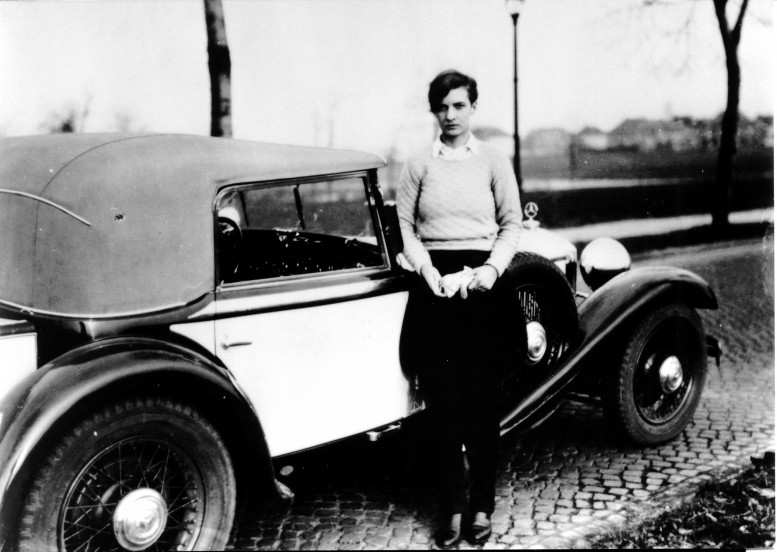
FIRST PARAGRAPHS: JACK KEROUAC “THE SUBTERRANEANS”
“ONCE I was young and had so much orientation and could talk with nervous intelligence about everything and with clarity and without as much literary preambling as this: in other words this is the story of an unself-confident man, at the same time of an egomaniac, naturally, facetious won’t do-just to start at the beginning and let the truth seep out, thats what I’ll do-. I’ll begin on a warm summer night-, ah, she was sitting on the fender with Julien Alexander who is…..let me begin with the history of the subterraneans of San Francisco….”
Required Reading: Lautréamont's Maldoror
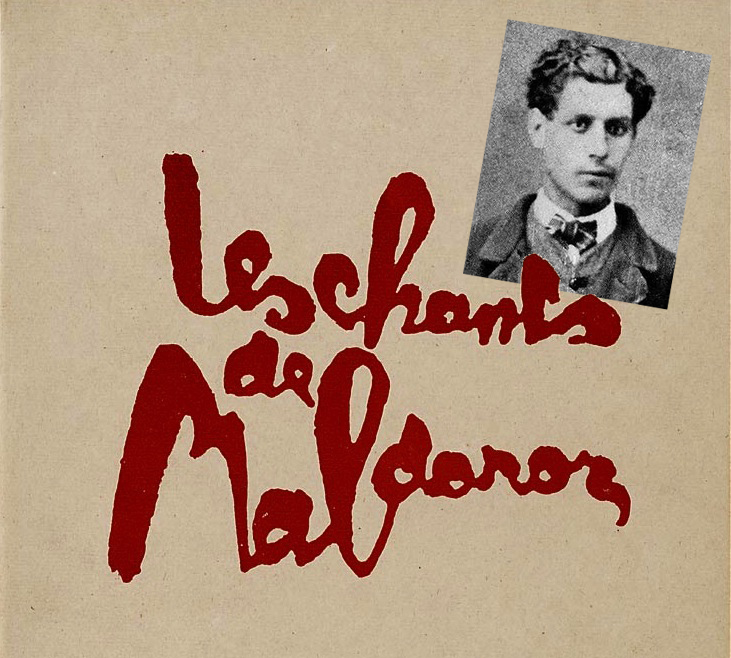
"The deadly uses of this book will lap up his soul as water does sugar." In 1917 French writer Philippe Soupault discovered a copy of Comte de Lautréamont's manuscript Les Chants de Maldor in the mathematics section of a small Parisian bookshop, near the military hospital to which he had been admitted.. Lautréamont, which was the pseudonym of Isidore Lucien Ducasse, born in Uruguay 1846 and died in Paris in 1870, was immediately canonized as a surrealist god - in the pantheon of Baudelaire, Rimbaud, and Mallarme. "Chants de Maldoror unveils a world, half vision, half nightmare, of angels and gravediggers, hermaphrodites, and homosexuals, madmen and strange children." Right now at the Galerie Anais in the Bergamont art space in Santa Monica, California a small exhibit of inspired drawings by the the similarly morbid artist Hans Bellmer - The Songs of Maldoror and Erotic Series is on view until March 31st. www.galerieanaisla.com
Daddy's Girl: The Erotica of Anaïs Nin
Anaïs Nin by Carl Van Vechten 1949
February 21 marked the 108th birthday of Anaïs Nin, a controversial figure perhaps best known for her romantic dalliances with prominent figures such as Henry Miller, Otto Rank, Lawrence Durrell, Antonin Artaud and Gore Vidal. She worked as a psychoanalyst, wrote fiction, trained as a dancer, appeared in films by Maya Daren and Kenneth Anger, had an affair with her father, pianist and composer Joaquin Nin, and eventually married Rupert Pole sixteen years her junior when she was forty-four (she was already married to banker and experimental filmmaker Hugh Guiler at the time.) All of this and more she documents in her diaries, which span more than sixty years. It is, perhaps, not surprising then that Nin also dabbled in erotica; collections of her stories, Little Birds and Delta of Venus, are now considered some of the finest erotica ever written.
The books were not published until the late 70s, after Nin succumbed to a three-year battle with cancer. The stories themselves were written much earlier, in the 1940s when Henry Miller and Nin were both living in Paris. Miller, after publishing Tropic of Cancer, was approached by a third party to write pornographic stories for an anonymous collector at the rate of $1 per page. Soon, many of his artist and writer friends, including Caresse Crosby, Robert Duncan, and Nin were churning out what the latter termed “an abundance of perverse felicities,” encouraged by Miller to take advantage of this unforeseen source of income.
Anaïs Nin’s Little Birds and Delta of Venus, born out of what was part joke, part moneymaking venture, are erotica in the truest sense of the word. The stories are rich, vivid, beautifully written and populated by character types who embody the multi-hued spectrum of human desire. They deftly and, at times, humorously explore the various ways in which sexual hunger is felt, expressed, and consummated and the reader is often as surprised by the events that unfold as the characters are themselves. The settings, scenarios, and figures in Nin’s stories are largely informed by her own life and enriched and transformed by her considerable powers of invention and unique poetic voice.
Little Birds and Delta of Venus can both be purchased at Amazon.com.
Text by Anna Wittel
A Prospect of the Sea
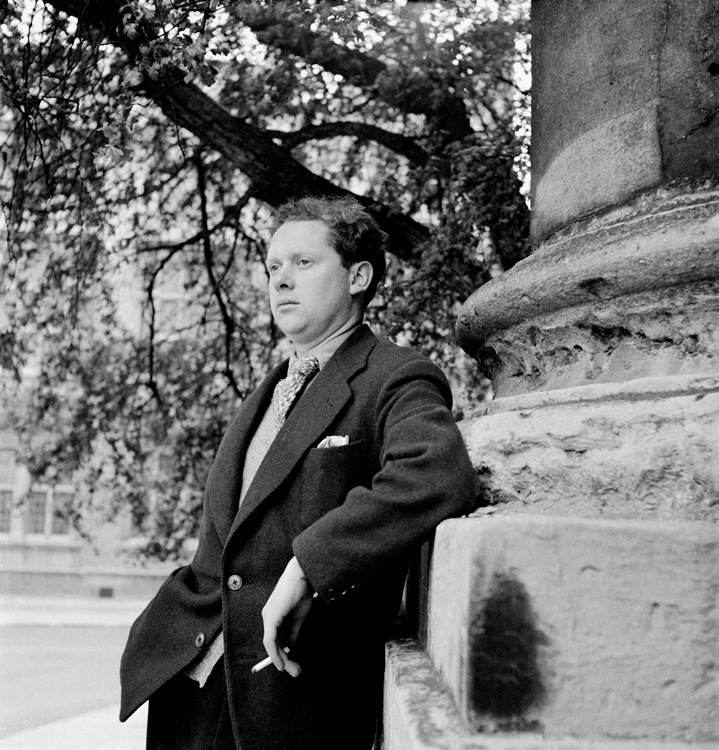 Dylan Thomas, outside the Ashmolean, Oxford c.1946 © Francis Reiss
Dylan Thomas, outside the Ashmolean, Oxford c.1946 © Francis Reiss
'Wake up,' she said into his ear; the iron characters were broken in her smile, and Eden sank into the seventh shade. She told him to look into her eyes. He had thought that her eyes were brown or green, but they were sea-blue with black lashes, and her thick hair was black. She rumpled his hair, and put his hand deep in her breast so that he knew the nipple of heart was red. He looked in her eyes, but they made a round glass of the sun, and as he moved sharply away he saw through the transparent trees; she could make a long crystal of each tree, and turn the house wood into gauze. She told him her age, and it was a new number. 'Look in my eyes,' she said. It was only an hour to the proper night, the stars were coming out and the moon was ready. She took his hand and led him racing between trees over the ridge of the dewy hill, over the flowering nettles and the shut grass-flowers, over the silence into sunlight and the noise of a sea breaking on sand and stone." (Dylan Thomas, from "A Prospect of the Sea.")
Lo-Fi: John Maus
Journey Into the Past
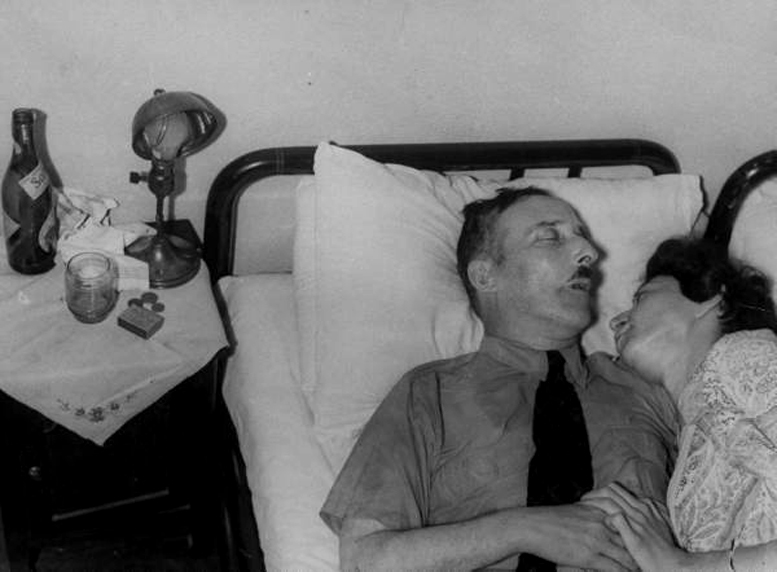 Poison on the Night Stand: Bodies of exiled Austrian author Stefan Zweig & his wife lying on bed, still holding hands, after they committed suicide together - Rio De Janeiro, Brazil - 1942
Poison on the Night Stand: Bodies of exiled Austrian author Stefan Zweig & his wife lying on bed, still holding hands, after they committed suicide together - Rio De Janeiro, Brazil - 1942
"A deep study of the uneasy heart by one of the masters of the psychological novel, Journey into the Past, published here for the first time in America, is a novella that was found among Stefan Zweig’s papers after his death. Investigating the strange ways in which love, in spite of everything—time, war, betrayal—can last, Zweig tells the story of Ludwig, an ambitious young man from a modest background who falls in love with the wife of his rich employer. His love is returned, and the couple vow to live together, but then Ludwig is dispatched on business to Mexico, and while he is there the First World War breaks out. With travel and even communication across the Atlantic shut down, Ludwig makes a new life in the New World. Years later, however, he returns to Germany to find his beloved a widow and their mutual attraction as strong as ever. But is it possible for love to survive precisely as the impossible?...During the 1930s, Zweig was one of the best-selling writers in Europe, and was among the most translated German-language writers before the Second World War. With the rise of Nazism, he moved from Salzburg to London (taking British citizenship), to New York, and finally to Brazil, where he committed suicide with his wife [in 1942]." You can find the newly translated Journey into the Past here.
Original Raconteurs: Julian Maclaren-Ross
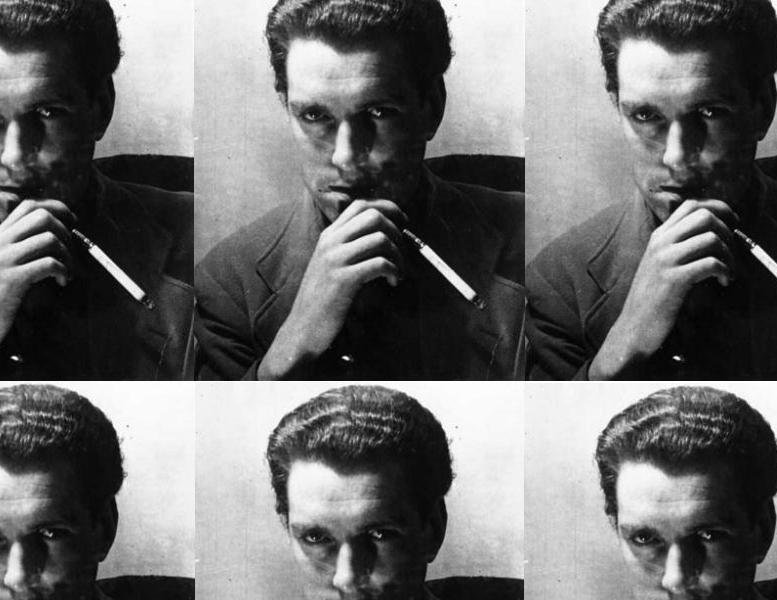 Photo assemblage of a portrait of Julian Maclaren-Ross
Photo assemblage of a portrait of Julian Maclaren-Ross
Editor Alan Ross begins his Introduction to Julian Maclaren-Ross’s Memoirs of the Forties with his claim that the book is the “front-line account of Bohemian wartime Soho by its longest-serving combatant.” Maclaren-Ross, a skilled raconteur held resident court at the Wheatsheaf Pub in “Fitzrovia,” an area popular with artistic types decked out in full dandy regalia, reminiscent of Oscar Wilde, which included a carnation in his buttonhole, extravagantly tailored suits, a teddy bear coat, and a silver topped cane. His signature flourish was the long cigarette holder he used to consume exotic tobacco. (He is said to have smoked up to fifty cigarettes a day.) His apparent flamboyance, however, belied the clarity and concision of his economic prose, delivered in a style not unlike his Modernist contemporary and one-time literary hero, Hemingway, although with much less gravity, and a great deal more irreverence and sly humor.
Maclaren-Ross’ short stories about his experience as a soldier during WWII and the blatant absurdities of military life gave him his first taste of success and he later went on to write novels, radio plays, literary satires, critical essays, and noir fiction. He was also an excellent translator having been educated, for the most part, in the south of France. However, Maclaren-Ross’s love of women and alcohol, his inability or refusal to conform to convention meant that he spent much of his life firmly entrenched at the poverty line. As his biographer Paull Willetts puts it, he was the "mediocre caretaker of his own immense talent."
In Memoirs of the Forties, unfinished at the time of his death, the author recounts in vivid detail his experiences in London during that decade and his personal dealings with other major-players of the era – Dylan Thomas, Graham Greene, the painters John Minton, Robert Colquhoun, Robert Macbryde, and others.
Certain anecdotes stand out for the way in which they shed light on famous or inscrutable personalities, such as Maclaren-Ross’ description of the time the grand mage, Aleicester Crowley, borrowed a copy of one of his short story collections, The Nine Men and returned the work with copious notes scribbled furiously in the margins. Maclaren-Ross describes them as “rather petulant old-world comments, such as: ‘Yes, yes, all very well, but why doesn’t he tell us what the girl’s background is?! Who are her people?!!’ and so on.” Crowley goes on to tell their mutual friend, who lent him the book, “Well next time you see him, tell him to be more precise about his characters’ origins. He seems to ignore all the traditional social values that make up the fabric of our civilization.’” Maclaren-Ross’ response was, “since I’d always understood that Crowley’s mission as Worst Man in the World was to tear this fabric down, [his comments] amused me quite a lot. But then maybe all diabolists are conservative at heart, or where would be the fun?”
Memoirs of the Forties and other of Julian Maclaren-Ross’ works can be found on Amazon.com.
Text by Anna Wittel
Black Lust
"One of those bizarre works of fiction and fact whose haunting details live with the reader forever. This diabolic novel is an encyclopedia of venery, a kaleidoscope of perversions, a jungle of horrors. Historic realism appealing only to people with mature, shock-proof tastes -the love and hate of a white woman for a black Mohammedan chief forms the overtone of this historic novel whose background paints the native tribes in the Valley of the Nile before the turn of this century." Jean de Valliot was actually the failed pornography writer Georges Grassal de Choffat, or Hugues Rebell, depending on who you ask. Black Lust was published in 1931 and only 2000 copies were printed "for private collectors." In my library is edition no. 1967.



